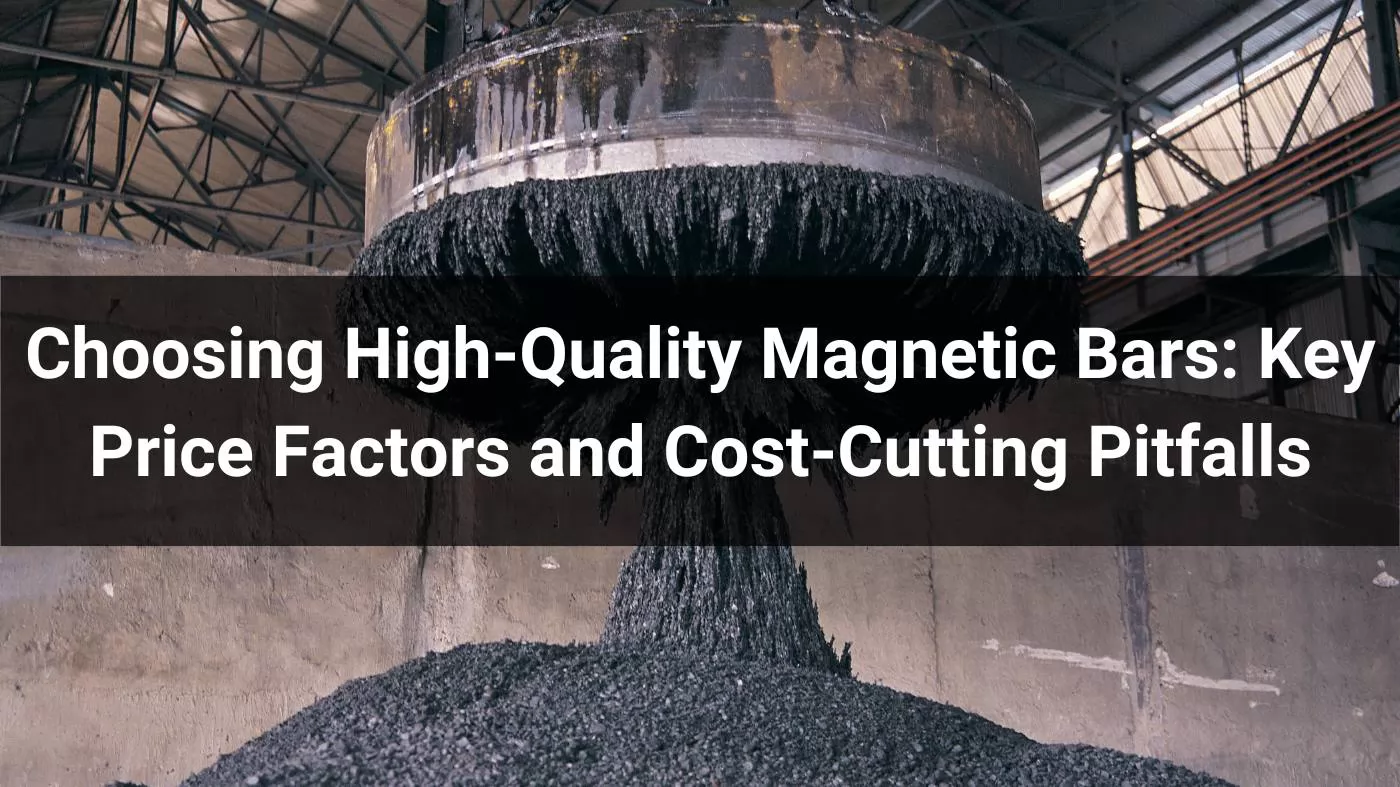Choosing High-Quality Magnetic Bars: Key Price Factors and Cost-Cutting Pitfalls

Magnetic bars play a vital role in various industries, particularly for removing unwanted ferrous particles from materials and products. When purchasing magnetic bars, you may notice significant price variations across different suppliers. Understanding the reasons behind these price differences will help you make informed decisions and ensure you’re buying high-quality, reliable products.
This guide explores the key factors that influence the price of magnetic bars and highlights common cost-cutting practices used by some suppliers that may compromise product performance.
The Structure of Tube Magnets
To better understand pricing and performance, it’s crucial to grasp the basic structure of tube magnets. A magnetic bar typically consists of a stainless steel tube, magnetic conductive sheets, and several powerful neodymium (NdFeB) magnets. The ends of the tube are sealed with mounting plugs, forming a complete unit that is ready for industrial use.
The overall design and the materials used directly impact both the magnetic bar's effectiveness and its price.
Key Factors That Influence the Price of Magnetic Bars
1. Tube Magnet Size
The size of the tube magnet is one of the most significant factors affecting price. Magnetic bars are filled with rare-earth permanent magnets, specifically neodymium magnets. Larger bars require more magnets, which increases the cost. Therefore, as the size of the magnetic bar increases, so does the number of neodymium magnets, leading to higher prices.
2. Bar Magnet Magnetic Strength (Gauss Rating)
The magnetic strength of a bar is measured in Gauss, with higher Gauss ratings indicating stronger magnets. For example, common Gauss ratings for magnetic bars include 9,000, 12,000, and 16,000 Gauss. The stronger the magnet, the higher the cost, particularly for neodymium magnets, which are available in various grades from N35 to N54. Higher grades deliver more strength, but at an increased cost.
3. Temperature Resistance
Magnets lose their strength when exposed to temperatures higher than their maximum operating limit. Therefore, temperature resistance is another key factor influencing cost. Different industries have varying temperature requirements, and higher-grade neodymium magnets are needed for applications with high-temperature conditions. For instance, while standard magnets can operate at 80°C, other applications may require magnetic bars capable of withstanding temperatures up to 240°C. The higher the temperature grade, the more expensive the magnets become.
Beware of Cost-Cutting Practices from Some Suppliers
While lower-priced magnetic bars may seem appealing, be cautious of suppliers who cut corners by using inferior materials or flawed production methods. These cost-saving tactics can result in compromised performance, reducing the effectiveness of the magnetic bars over time.
1. Using 50% Steel Washers or Ferrite Magnets
One common practice among low-cost suppliers is using steel washers or ferrite magnets in place of neodymium magnets. These cheaper materials drastically reduce the magnetic strength of the bars, leading to poor performance. For instance, one customer discovered that only 50% of the magnets in their bars were neodymium, while the rest were steel washers, resulting in weak magnetic strength.
Disadvantage: Using steel washers or ferrite magnets reduces the magnetic bar’s effectiveness in removing contaminants.
2. Reducing the Thickness of the Stainless Steel Tube
The thickness of the stainless steel tube is crucial for both magnetic strength and durability. Some suppliers use thinner tubes (as thin as 0.3mm) to make it appear that the magnetic strength is high, even though they use lower-grade magnets inside. A thinner tube might offer higher initial Gauss readings, but it compromises durability. Over time, these thinner tubes are prone to wear, damage, and rust, rendering the magnetic bar unusable.
Recommendation: For optimal performance and longevity, choose bars with a tube thickness between 0.5mm and 0.8mm.
3. The Volume of Rare-Earth Magnets
Some manufacturers reduce the diameter of the magnets inside the bar to cut costs. While this may not immediately affect surface magnetism, it weakens the structure of the tube over time. As the tube becomes deformed, it loses its effectiveness and becomes more prone to damage.
Disadvantage: Reduced magnet volume leads to poor structural support and reduces the durability of the magnetic bar.
4. Using Defective Magnets
In an effort to lower production costs, some suppliers use defective magnets with missing corners or chips. These defects are hidden once the magnets are sealed inside the bars, making it difficult to detect the flaws visually. Defective magnets produce uneven magnetic fields, which reduces the efficiency of removing ferrous contaminants.
Disadvantage: Using defective magnets compromises the overall magnetic performance of the bar.
5. Using Second-Class Magnets
Second-class magnets, which are typically unqualified for top-grade applications due to defects, are sometimes used in lower-quality magnetic bars. These magnets do not perform as well as top-grade neodymium magnets. When inspected with a magnetic pole observation film, high-quality magnets show uniform magnetic pole distribution, while second-class magnets display uneven and disorganized magnetic fields.
Disadvantage: Inconsistent magnetic fields reduce the magnetic bar’s ability to efficiently remove impurities.
Conclusion
When choosing magnetic bars, it's essential to focus on quality to ensure reliable performance. Cutting corners on materials or manufacturing processes might lead to short-term savings, but it often results in long-term problems, such as reduced durability and inefficient magnetic strength.
At our company, we prioritize delivering high-quality magnetic bars that offer superior performance, durability, and value for money. By investing in our products, you're ensuring the effectiveness of your magnetic separation processes, enhancing the efficiency of your operations, and securing long-term returns on your investment.

